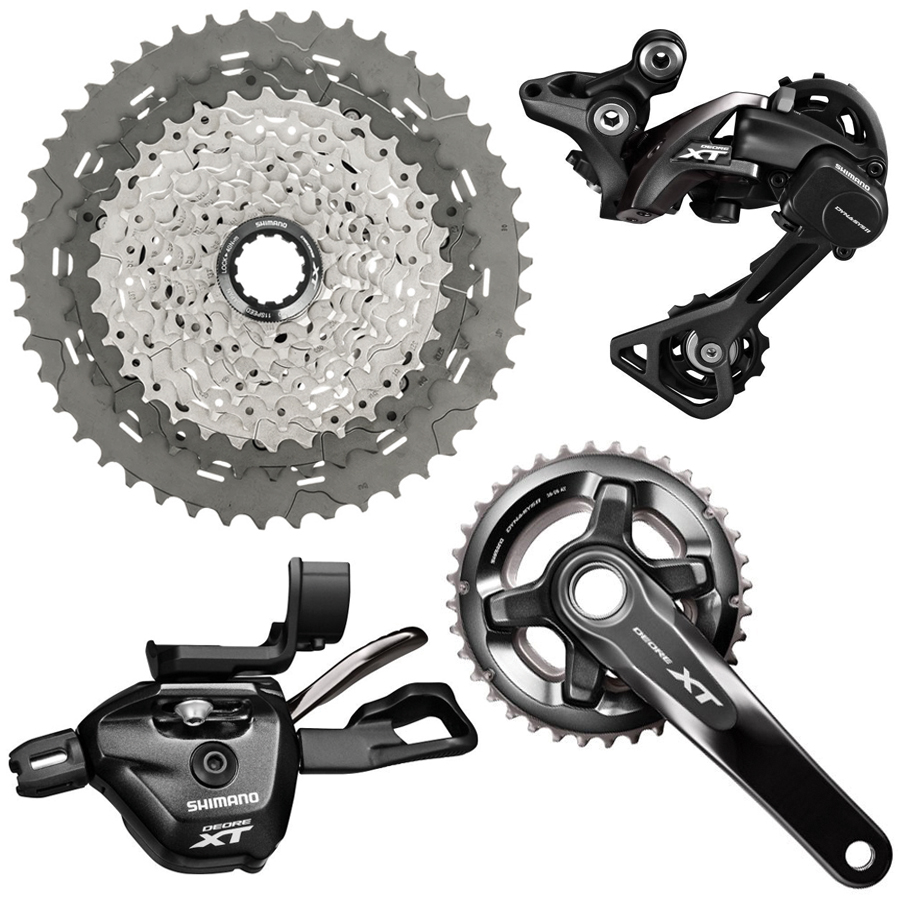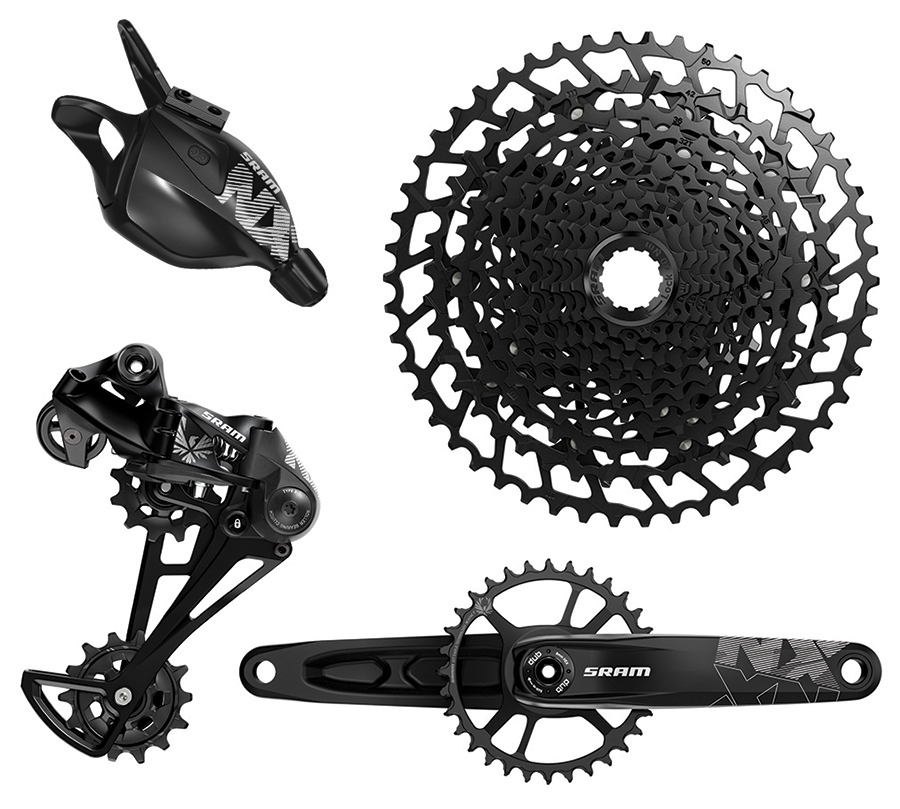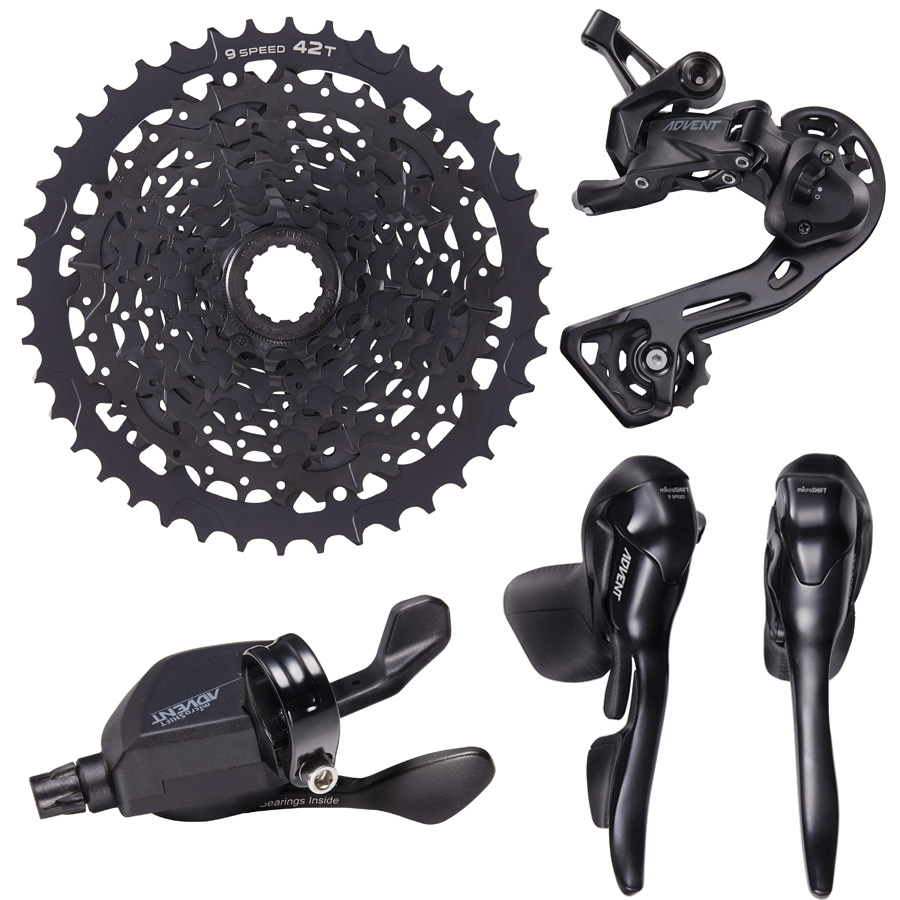The Case for a 1x Drivetrain on Your Touring Bike
This article originally appeared as part of the Cyclists Travel Guide in the March 2020 issue of Adventure Cyclist magazine.
Over the last few years, single-chainring (known as 1x or “one-by”) drivetrains have all but taken over in the mountain bike world. No, scratch that. They have completely taken over the mountain bike world. Not only that, but 1x has gained serious ground in other bike markets too: commuters, gravel bikes, and even road bikes are showing up with just one chainring. There are even road-specific, wide-range 1x drivetrains in the works. Before long, we’ll see 1x in the Tour de France peloton.
How has the 1x drivetrain attained world domination? You can argue that SRAM, the company that put the first viable 1x drivetrain on the market, pursued some aggressive and successful marketing campaigns.
But I think the real reason 1x has taken over is much simpler: in fact, 1x is much simpler. One derailer, one chainring, and one shifter make for a drivetrain that is much easier to install, adjust, and keep in tune. And now that 1x cassettes offer greater gear ranges, there’s little to no downside to going with a single-chainring drivetrain. (Old-school triples still offer a bigger range, but many of those gears are redundant, and whether you really need that huge top end is arguable.)
The 1x drivetrains reviewed on these pages are specific to mountain bikes, with a couple of exceptions. You can have SRAM Eagle on your dropbar bike, but you have to spring for the fancy wireless version (if you need to ask how much it costs, you can’t afford it). And Microshift’s Advent is available with any kind of shifter.
One further caveat: if you’re willing to buy aftermarket and mix and match brands, you can pair a 1x drivetrain from Shimano or SRAM to your dropbar bike. Microshift sells bar-end and thumb shifters for SRAM and Shimano 12-speed derailers, and bar-end, thumb, and dropbar shifters for Shimano 11-speed. Gevenalle makes unique dropbar shifters — essentially thumb shifters mounted on brake levers — for Shimano and SRAM 12-speed, 11-speed, and 10-speed.

Shimano XT M8000
Speeds: 11
Cassette: $112
Derailer: $100
Shifter: $60
Editor’s note: We’re excluding Shimano’s new 12-speed groups in this review mainly because we have yet to try them, but also because the cassettes require a new, proprietary freehub body called Micro Spline. (In general, we prefer cassettes that fit on the standard, ubiquitous Shimano HG freehub body, which is probably what you’ll find on your bike. Hence our review of the NX level of Eagle: unlike the more expensive Eagles, NX doesn’t require SRAM’s proprietary XD freehub body.) Shimano’s 11-speed 1x groups may be outdated now, but they’re still widely available in the aftermarket.
Shimano arrived a bit late to the 1x party. After sticking to its double-chainring guns while SRAM was on the second generation of its 1x 11-speed groups, Shimano finally brought the goods.
The 11–46T cassette has a slightly smaller range than SRAM’s 11-speed 10–42T cassette — 418 percent versus 420 — but it fits on a standard freehub body. Shimano also spread out its gearing range more unevenly compared to SRAM: the range at the high end is more closely spaced, with bigger jumps at the low end. The jump to the lowest gear, from 37T to 46T, is a big one.
The long-cage XT derailer boasts an adjustable clutch for chain retention and an on/off switch for removing the wheel. The trigger shifter is standard Shimano fare, with one surprise: the upshift lever can click through two gears at once. (You have to spring for at least XT to get this feature; SLX doesn’t have it.)
I used the XT group for two seasons on a couple of different mountain bikes, and on everything from trail riding to overnights to weekend trips. With a 30T chainring, I had a low enough gear for climbing the steeps (19 gear inches on 29 x 2.4in. tires), but I would spin out pretty quickly on descents, which is less of an issue on dirt than on the road. The shifting was crisp, precise, and simple to tune, and I was always surprised at how easily I could shift into that big cog, even under load. Modern clutch derailers are a marvel — I never once dropped the chain. And that double upshift feature? At first I thought it was a gimmick, but then I found myself using it all the time.
There are less expensive 1x groups out there, and there are groups with bigger cassettes, but XT 11-speed is a solid performer with a good gear range. If you’re in no hurry to shell out for a new hub just to use Shimano’s new 12-speed groups, XT won’t let you down.

SRAM NX Eagle
Speeds: 12
Cassette: $100
Derailer: $107
Shifter: $42
Look at that pie plate! You know when the lowest cog is bigger around than your brake rotors that you’ve got a nice low gear. The NX Eagle cassette has a smaller gear range than its pricier siblings — 454 percent versus 500 for the 10–50T cassettes — but the 11–50T cassette fits on a standard freehub body. The NX derailer has a nonadjustable clutch to keep the chain on, and instead of an on/off switch, it features SRAM’s genius Cage Lock. You push the cage forward and lock it into place, making wheel removal easier than ever. I wish every derailer manufacturer would license this design from SRAM.
Aside from the cassette, the main differences between NX and the more expensive versions are materials and tolerances. NX has more plastic parts and doesn’t shift quite as crisply as GX or higher, but the differences are academic.
I used the NX Eagle group for a busy season of bikepacking on my Surly Wednesday that I’d set up with 29+ wheels (look for a Road Test soon). It’s not a light bike, and I didn’t hold back when packing it either. (I even strapped a cooler to the front rack for a weekend trip.) Hence I made good use of that giant 50T cog. With a 30T chainring and 29 x 3.0in. tires, I had a low end of 18.3 gear inches, which was great for tractoring up steep, loose climbs. (Note that 29+ tires are very tall and therefore have a big effect on gearing. If you have an older mountain bike with 26in. wheels and, say, 2.25in. tires, you’re looking at 15.9 gear inches with the same 30T chainring.)
The NX Eagle group served on everything from local overnights, singletrack missions, and even a week riding self-contained on the Great Divide route in Montana. I never once wished for a lower gear, and I can count on two fingers the times I thought the 10T cog on the more expensive cassettes would have been nice. Like the Shimano group, I found NX Eagle easy to set up and keep in tune (SRAM includes a handy plastic guide to help you get the correct distance between the lower pulley and big cog), and I never dropped or broke a chain, or had any drivetrain issues whatsoever in the field.
NX Eagle is simply an affordable, reliable drivetrain with all the gears you’ll ever need, ready for any kind of bikepacking mission. Whenever I’m asked to recommend a wide-range 1x drivetrain, the answer’s always the same — NX Eagle.

Microshift Advent
Speeds: 9
Cassette: $40
Derailer: $60
Shifter: $140 for dropbar ($25 for trigger)
Microshift Advent is a bit of an outlier in this group in that 1) it’s 9-speed, and 2) it has a smaller range. With an 11–42T cassette, you’ve only got a range of 381 percent, which may or may not be enough, depending on your gearing needs. On the upside, Advent is very, very affordable. Like the Shimano and SRAM offerings, Advent has a clutch derailer and the cassette fits on a standard freehub body.
I used the Advent group exclusively on our All-City Gorilla Monsoon project bike (Road Test, Aug./Sept. 2019). Setup was a little trickier than what I’m used to from SRAM and Shimano, but once I got there, the shifts were solid and direct, if lacking in the crispness and tactility of the other manufacturers’ groups. Paired to a 34T chainring, I had a low end of 21.5 gear inches, which was plenty for riding local fire roads, a bit of singletrack, and loaded overnights.
The Shimano and SRAM groups are trigger-shifter only, but Advent doesn’t discriminate. Microshift offers trigger, dropbar, bar-end, and thumb shifters for the Advent derailer, so regardless of the kind of bike you have, you can probably throw Advent on it. I opted for the dropbar brifters for the Gorilla Monsoon, and I was pleasantly surprised with the shift action. I did, however, run into trouble in the second-to-lowest gear, in which the cable’s barrel end would interfere with something inside the brifter as the cylinder rotated into position. After an extended bout of exasperation, I finally emailed Microshift and was told that the Advent shifter requires a Campagnolo shift cable, which has a smaller, rounded end. I swapped out the shift cable and voilà! No more problems.
Advent’s affordability is perhaps most noticeable in its weight. The cassette is a bit heavy, but not much weightier than the NX and XT cassettes. The derailer, however, with its steel cage, is so heavy you can feel the pull of its gravity. In another nod to cheapness, Advent’s shifting gets a bit wonky as it wears and goes out of tune. But hey, look at that price. What do you want?
The Case for 1x on your Touring Bike
The drivetrains reviewed on these pages are admittedly dirt-focused bikepacking units. (In spite of its dropbar compatibility, Microshift markets Advent primarily as a mountain bike drivetrain.) But if you’re looking to simplify, modernize, or potentially lighten your dropbar touring rig, you shouldn’t dismiss them. The fact is, touring-specific triples are a dying breed, and, as Editor-in-Chief Alex Strickland found out with Shimano’s new gravel-specific GRX, doubles won’t quite get you there, at least not without some aftermarket modification. If you’re willing to give up a bit of top end — do you really need to pedal when you’re cruising down a mountain pass at 40 MPH? — modern 1x drivetrains could be the solution.
I could wax lyrical about the spiritual benefits of drivetrain simplicity — one derailer, one shifter, one chainring, one cable — but if the idea of tossing an antiquated, tempestuous front derailer and its trio of chainrings into the bin doesn’t appeal to you, maybe the numbers will.
The Trek 520, updated for 2019, is about as modern as a classic touring bike can get. It has disc brakes, an aluminum fork, and, yes, a triple. A mix of Shimano Alivio and Sora, the 520 has 48/36/26T chainrings mated to an 11–36T cassette. On 700c x 38mm tires, this gives you a low end of 19.8 gear inches and a top end of 119.8. Can a 1x match that? The short answer is no, but let’s dig a little deeper.
Let’s say a product manager at Trek got a wild hair and spec’d the 520 with NX Eagle. (As discussed above, the product manager would have to get creative to find a compatible dropbar shifter, but it could be done.) With the same tires and a 36T chainring, you’d have the same low end of 19.8 gear inches. Predictably, you’d lose a chunk of top end, with only 89.9 gear inches. If the product manager spec’d a GX Eagle cassette — requiring the XD freehub, as discussed — that little 10T cog would up your top end to 98.9 gear inches. That still seems like a big loss of top end, but like I asked above, are you really making use of that high gear?
Another common complaint from 1x detractors is that of chain wear and breakage due to the more extreme chainline angles at either end of the cassette. On the face of it, this seems like a valid argument. Surely, putting that much lateral force on a chain will shear it in half, right? Isn’t that why we’ve all been warned for decades about the dangers of cross-chaining? Thing is, I haven’t broken a chain in years. I don’t weigh that much, but I’m pretty fit, I ride with heavy loads, and I’m much more of a high-gear smasher than a low-gear spinner. Not only that, but I don’t know anyone who has broken a chain recently. Are our chains wearing out more quickly? Maybe, but I haven’t had to replace a chain more than once a season, which is perfectly reasonable.

